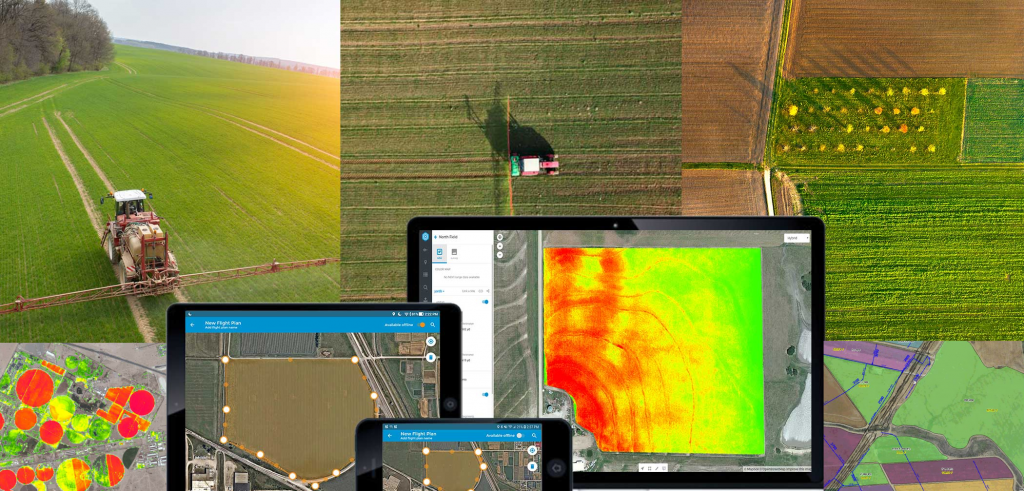
Executive Summary
Introduction and Scope
This is the final compiled report for Kharif 2019, covers European Space Agency images analysis based results of acreage estimation of guwar, paddy, cotton, crop health monitoring and NDVI based yield.
Star Agribazaar Technology Limited started developing crop area estimation procedures and crop yield models, based on the application of satellite remote sensing, GIS technology, agronomy, agro-meteorology, statistics and other allied disciplines.
Conventionally, Crops area estimation with satellite-based crop assessment has been developed to forecast and estimate crops statistics of major crops which includes Guwar, Paddy and Cotton.
Excerpts of the Report
In comparison to last year’s (2018) total productivity, the total crop production and area sown this year have experienced a downfall.
2018: Total crop production – 3,00,995 Tons
Total area sown – 496824 ha
2019: Total crop production – 297298 Tons
Total area sown – 457670 ha
Amongst the total crop production in Ganganagar, total cotton has been predicted to be 75469 Tons including poor, moderate and good quality. Total guwar production has been predicted to be 185205 Tons while paddy production has experienced 36624 Tons including all the three types of total production.
- Cotton:
The total area sown for poor quality in Kharif season 2019 has been indicated at 1 ha being the lowest among the other types of cotton sown. The acreage total for moderate quality cotton has been predicted at 27618 ha noticing medium acreage this season. Finally, the paddy of good quality has been evaluated with the maximum acreage at 83250 ha.
- Guwar:
In Ganganagar, the total guwar acreage for poor quality in Kharif season 2019 has been estimated at 45007 ha, experiencing the minimum area sown this season. Simultaneously, the total guwar acreage for good quality in Kharif season 2019 has been estimated at 137224 ha. The good quality guwar has experienced medium acreage this season in Ganganagar district. Guwar acreage for moderate quality in Kharif season 2019 has been predicted at 152723 ha having the maximum acreage estimation.
- Paddy:
The total acreage for paddy of poor quality in kharif season 2019 has been forecasted at 1086 ha being the lowest among all other qualities of the same. Similarly, the total paddy acreage for moderate quality in Kharif season 2019 has been estimated at 4667 ha, experiencing medium acreage this kharif season. For paddy of good quality, the acreage is predicted to be 6094 ha having the maximum area sown for the same.
Introduction
The city, Ganganagar, is widely known as “The food basket of Rajasthan” and “Green district of Rajasthan”. The district has extreme climatic conditions with the scorching summer, cold winters and mild rainy season. Dust storms during summer, frosty winter nights and ground fog are some of the typical features of weather hazards.
- Soil Type: The types of soil available in Rajasthan are mostly sandy, saline, alkaline and chalky (calcareous). Talking about Ganganagar district, there are three types of soil are primarily found: Canal irrigated medium texture soil (sandy loam to loam), Canal irrigated heavy texture soil (loam to silt loam), and Rainfed light-medium texture soil (sandy to loamy sand).
- Crop Varieties: The economy of the city is based on agriculture with its crops including wheat, mustard, cotton, guwar, bajra, sugar cane, mung, groundnut, til, and castor. Here, we are focusing mainly on the assessment of major crops in the area, i.e. cotton, paddy, and guwar.
- Agricultural Economy: The agricultural sector in Rajasthan counts for 22.5% in the GSDP (Gross State Domestic Product), out of which Ganganagar contributes 60.3% of agricultural land in the state entirely.
In India, Rajasthan alone produces 70%-75% guwar and grows the country’s 60%-62% guwar grains. The total productivity of guwar in Rajasthan is 370 kg/ha with an area of 28 LA. Out of this, Ganganagar produces 1.45 lakh ton in an area of 1.80 LA with a productivity of 807 kg/ha. As for cotton, the whole of Rajasthan produces 16.5 bales of cotton. Out of this, productivity in Ganganagar is 3.00 bales on an average every year.
Similarly, total paddy production in Rajasthan is 2.047 lakh ton in India. Ganganagar solely grows 1,722 kg/ha on an average every year.
Objective
The main objective of the project envisages satellite-based crop acreage estimation, health monitoring and yield estimation of Guwar, Cotton and Paddy crops for Kharif 2019-20 using Remote sensing and GIS techniques, Agronomy, agro-metrology Statistical Data and Machine Learning algorithm.
Ground Truth Surveys (GTS)
Extensive programs were devised to undertake ground-truth surveys to collect crops related information during season. Field teams visited the sampling segments through Mobile Application.
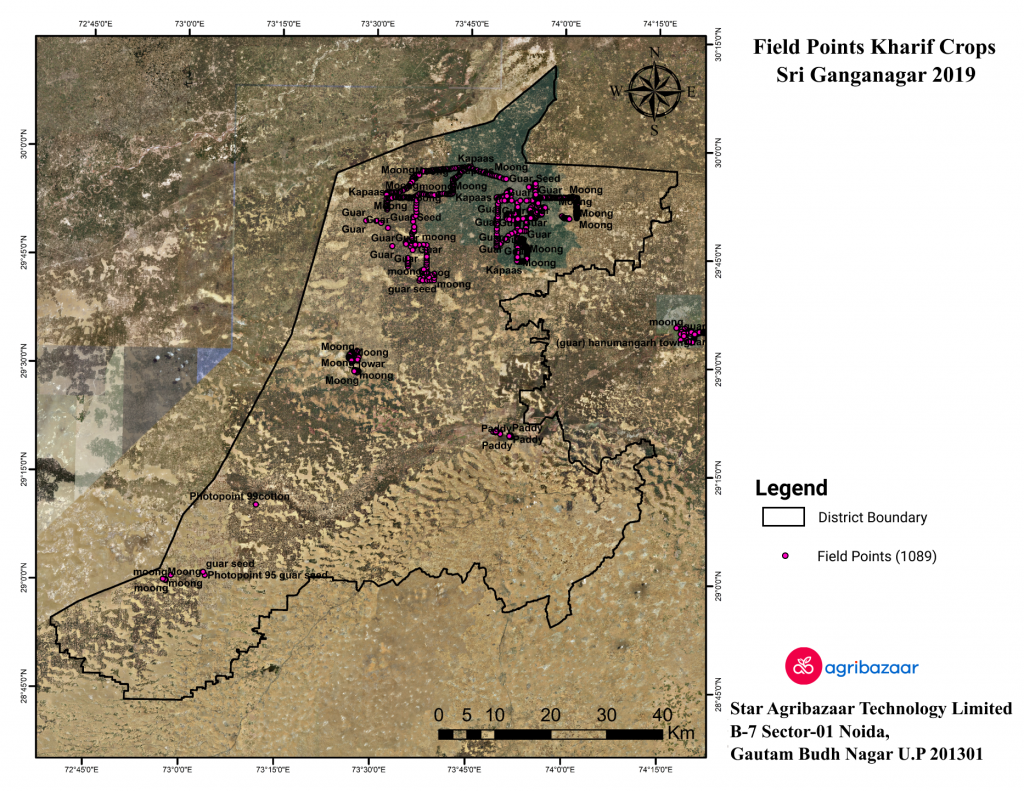
Study Area
This is a study for kharif 2019 in Ganganagar district of Rajasthan, India stretched between 29° 54′ 13.8204” N latitude and 73° 52′ 37.8840” E longitude covering an area of 11,154 Km2. The total study area covers 9 talukas including Anupgarh, Ganganagar, Gharsana, Karanpur, Padampur, Raisinghnagar, Sadulshahar, Suratgarh, Vijainagar. The map below shows the talukas covered in Ganganagar.
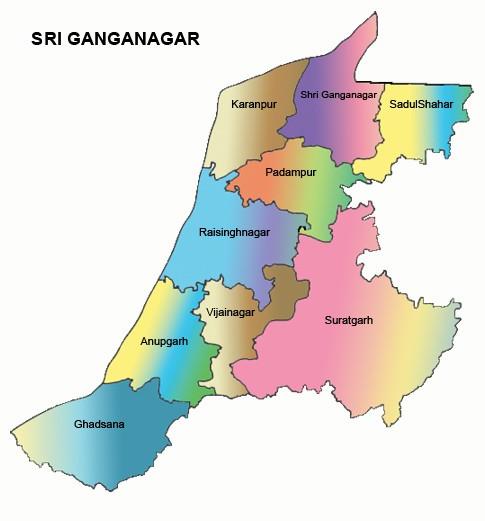
Scope of the Project
To conduct this study, under mentioned applications were covered.
- Acreage estimation of all guwar, cotton and paddy differentiated in selected varieties i.e. poor, moderate, and good.
- Satellite image-based crop health monitoring and analysis – using Sentinel 1 and Landsat satellite data
- Satellite-derived NDVI based yield estimation.
- Total guwar, cotton and paddy acreage estimation in all 9 talukas of Ganganagar district.
Data set Used
- Multi-Spectral and multi-temporal satellite (Sentinel-2) data have been widely used in the field of agriculture for estimation of area under different major crops like Cotton, Guwar and Paddy etc.
- Weather and average rainfall data used for crop model.
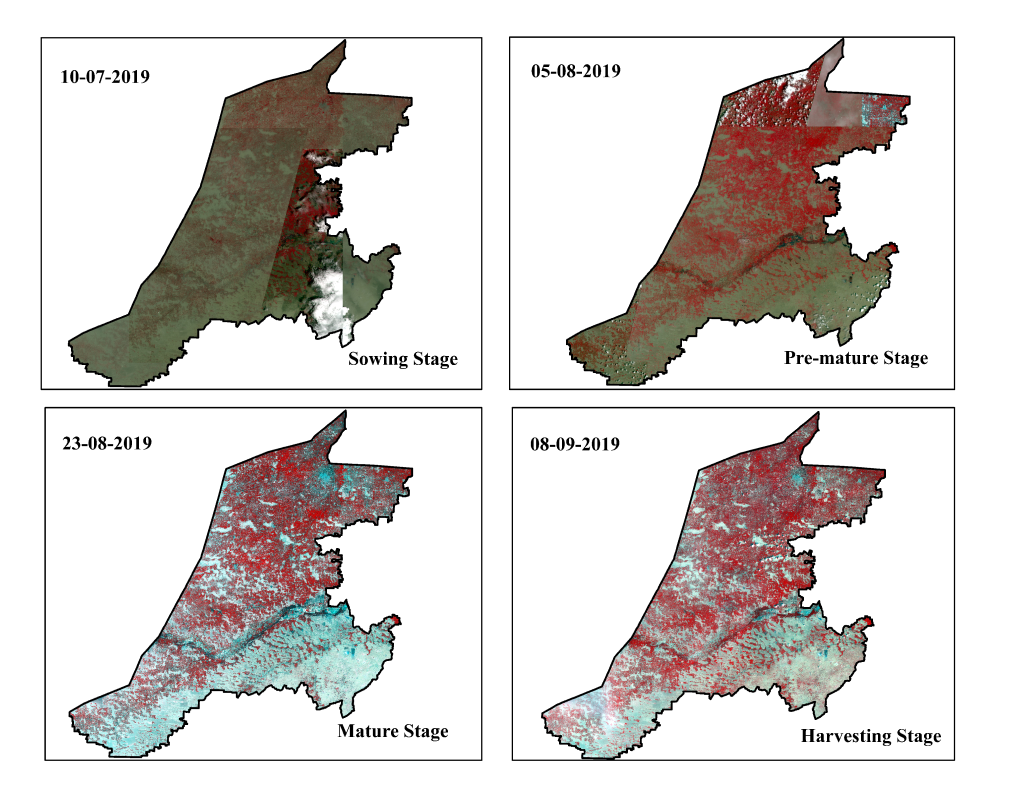
Rainfall and Climatic Conditions
Most of the agriculture in India is rainfall dependent. The current year has shown changes in rainfall pattern all over India. This year monsoon has arrived in the country later than expected. Hence continuous monitoring of the weather has been undertaken. The graph below depicts the precipitation estimation this Kharif season 2019 in Ganganagar district.
The graphical representation below is the temperature data of Ganganagar predicted for this Kharif season 2019. The maximum temperature in the district is higher than 40 °C is analyzed in 2019. The graph compares the temperature condition for the previous 2 years i.e. 2017 and 2018 followed by 2019.
The map below depicts an overall deficiency in the rainfall pattern of the country. India Meteorological Department has recorded deficient precipitation in the state. Rainfall being merely 18.6 cms in Rajasthan, production of cotton has been severely affected with a heavy downfall.
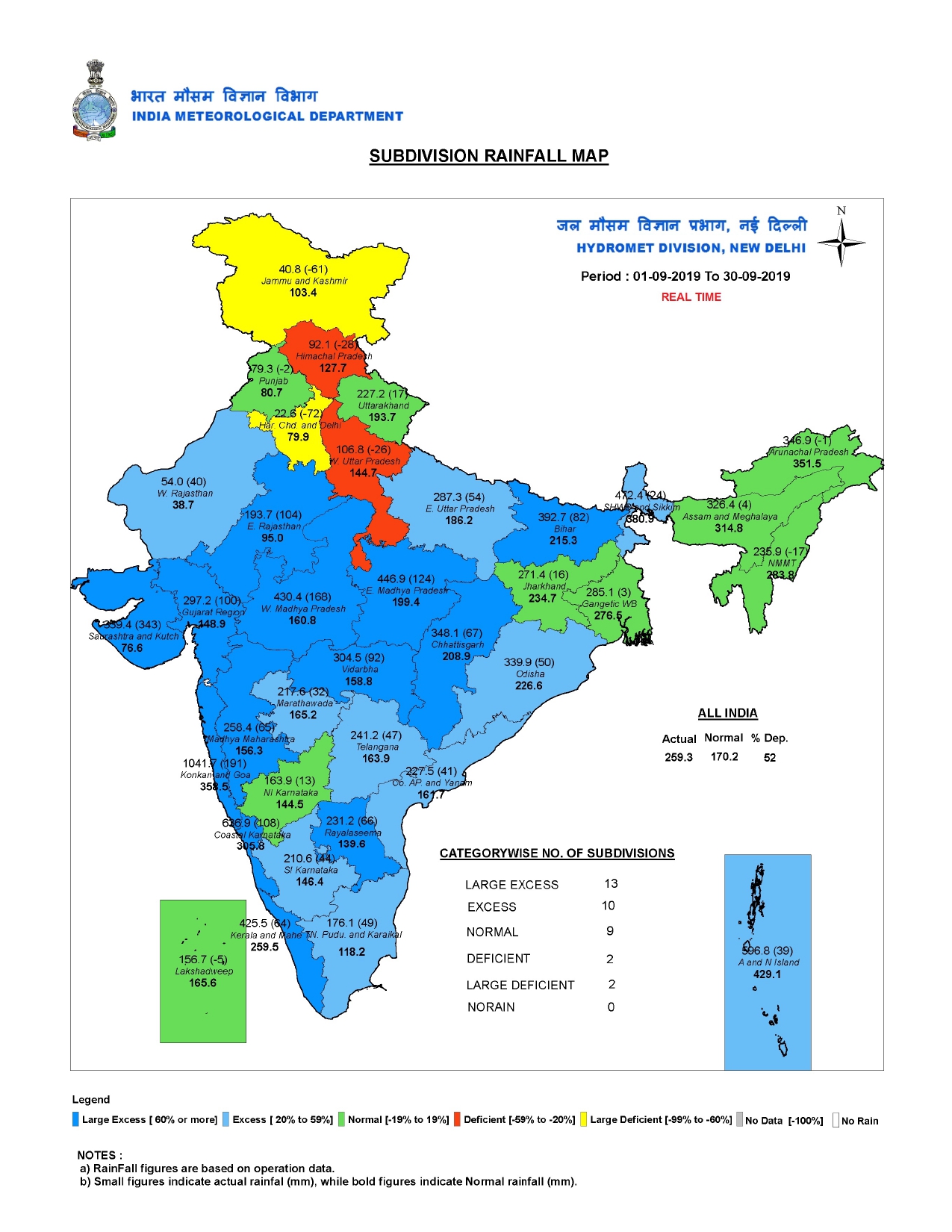
Results
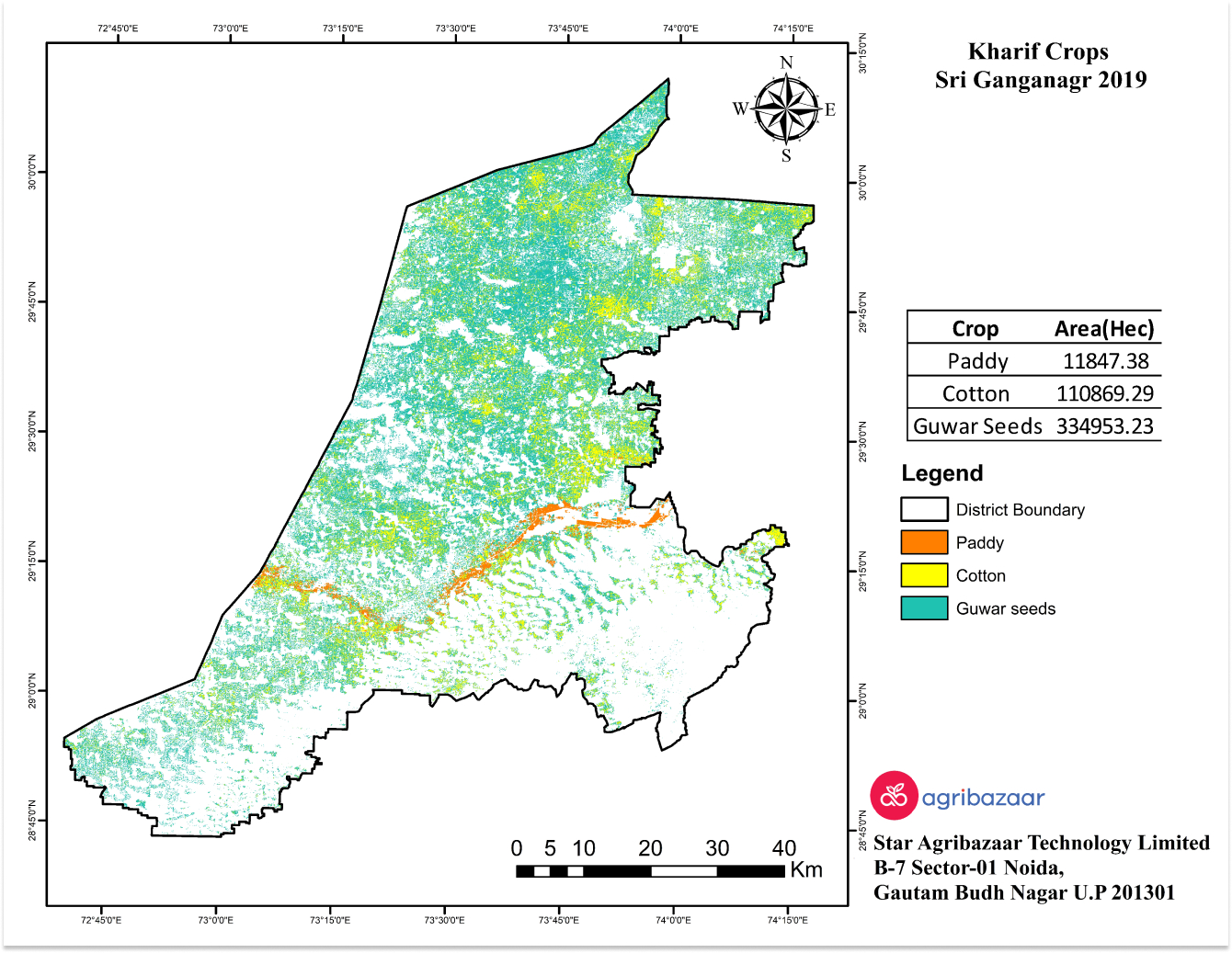
- Crop Production: As per the crop assessment in the Ganganagar district, Guwar crop experiences the highest production i.e. 185205 tons (62%) as compared to the rest of the crops (paddy & cotton) in the Kharif season 2019.
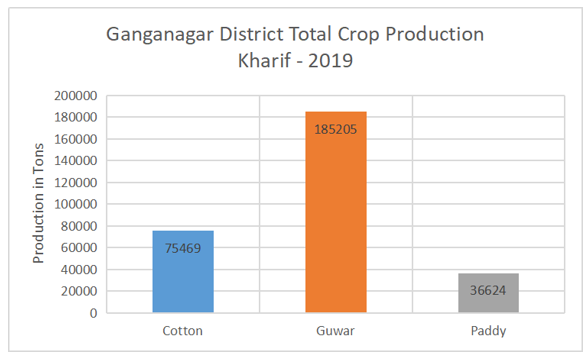

- Crop Variation: The crop acreage in Kharif season 2019 is expecting Moderate Guwar quality to be produced the highest. The crop is estimated to yield in a sown area of 152723 hectares while the good and poor quality is predicted to be sown in 137224 hectares and 45007 hectares of agricultural land, respectively. On the other hand, cotton and paddy are still evaluated to be grown at a relatively lower scale.
- Yield Estimation (Crop-wise): The image below represents the graphical representation of yields estimated in this season. The predicted assessments evaluate that Guwar crop of moderate quality will be the best yield this Kharif season in Ganganagar.
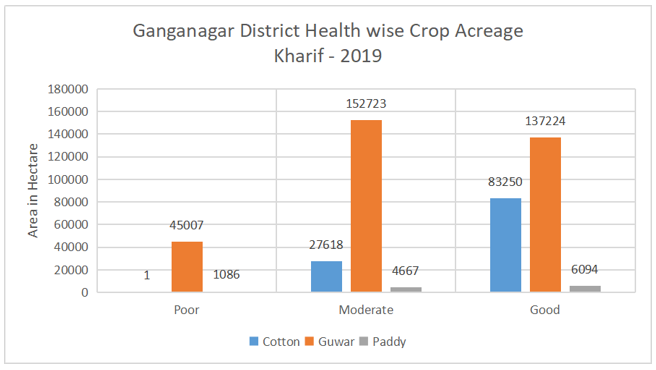
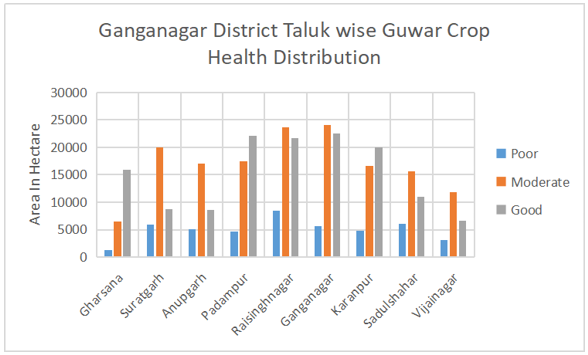
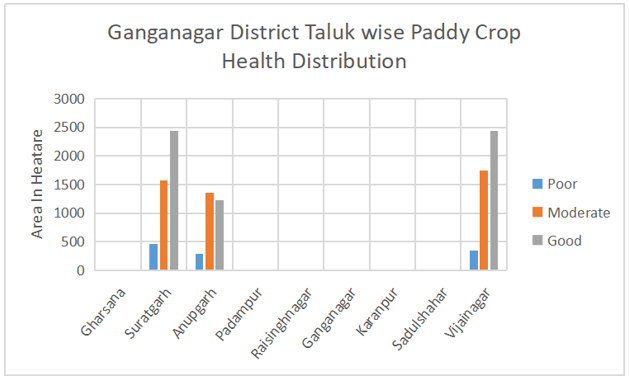


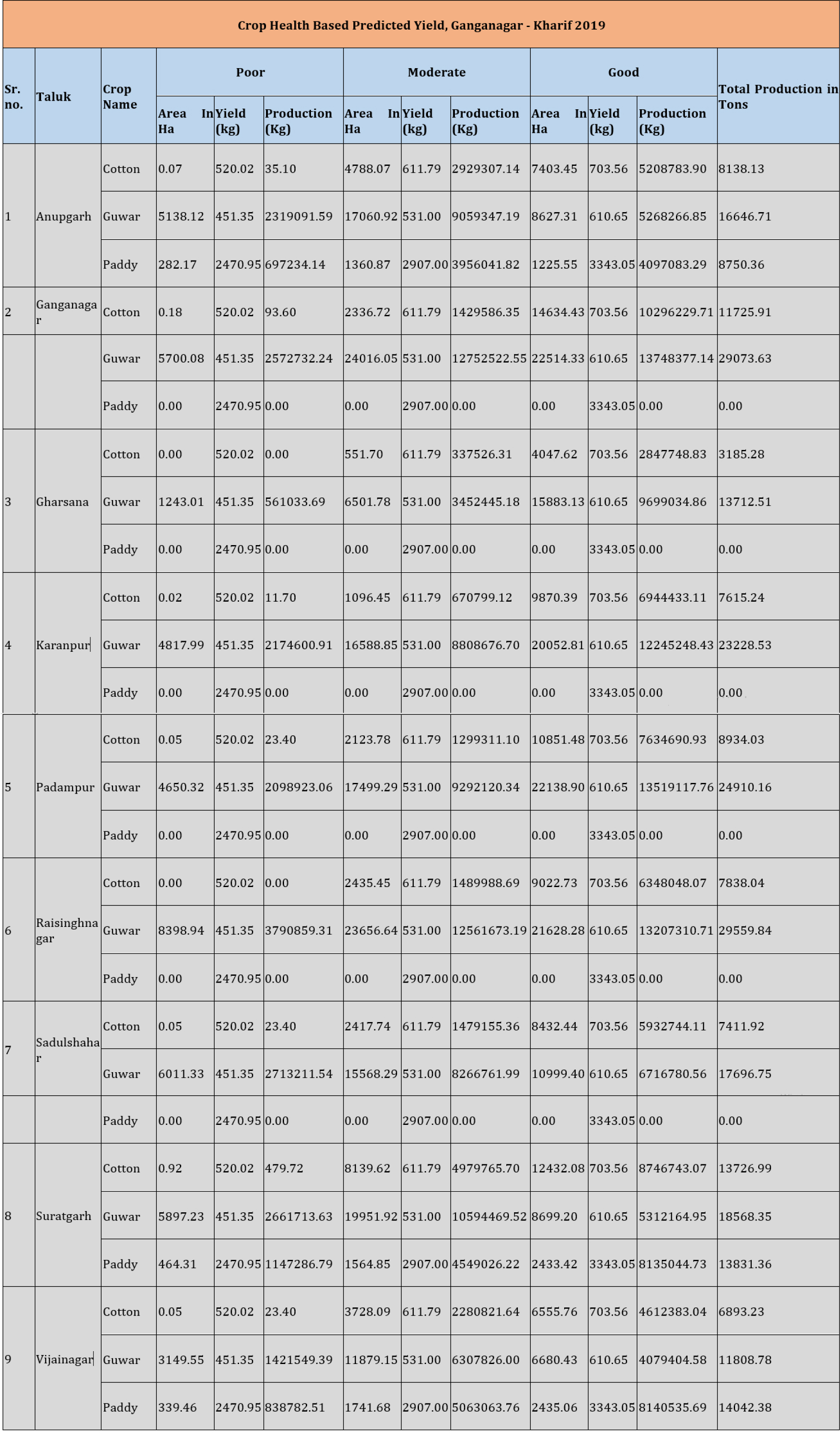
Crop health map of Ganganagar Kharif crop 2019
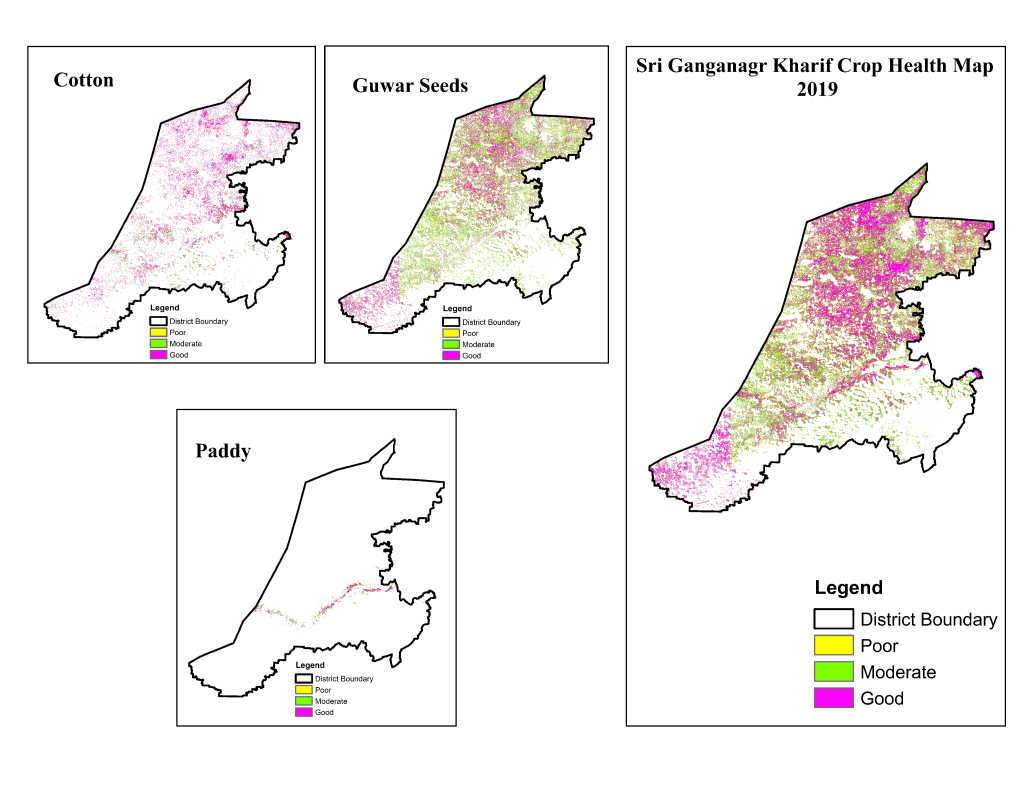
Conclusion
According to the estimated data, Paddy crop has experienced an increase in its area sown and the total production in Ganganagar. While if the data assessed for Guwar and Cotton is analyzed, the difference in the total area sown has experienced a heavy downfall. The comparison in the production for Guar crop is raised by a minor difference.
Conclusively, production in paddy has been increased this Kharif season as compared to the yield the previous year. But examining the entire data estimated for this season, Guwar (moderate quality) is the highest produced crop in Ganganagar.
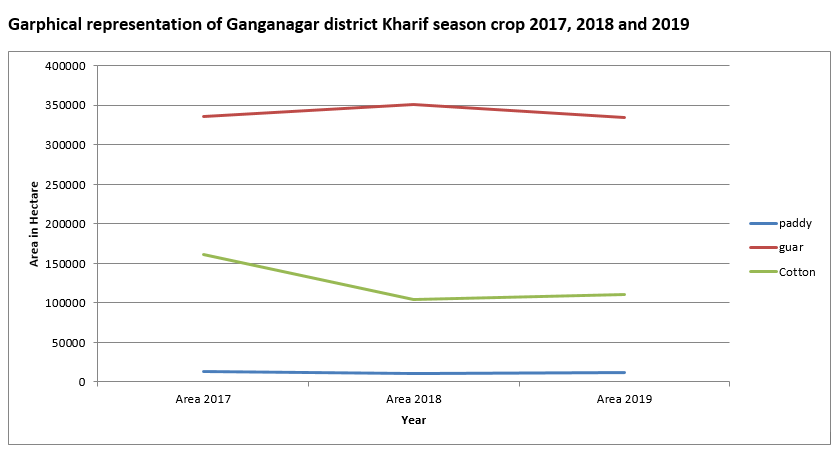
Summary:

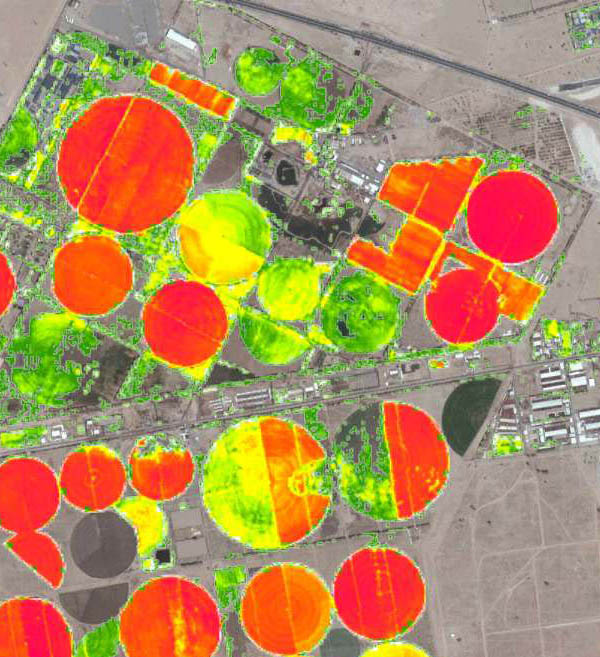




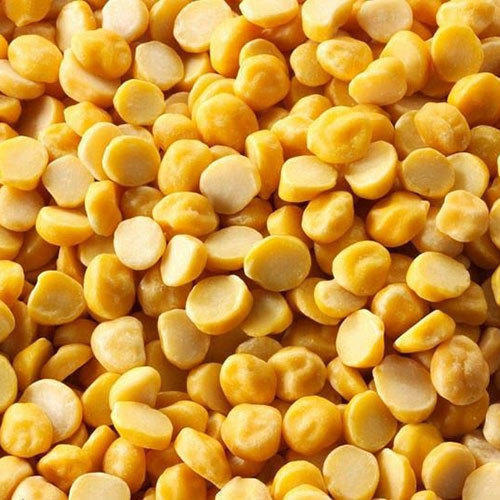
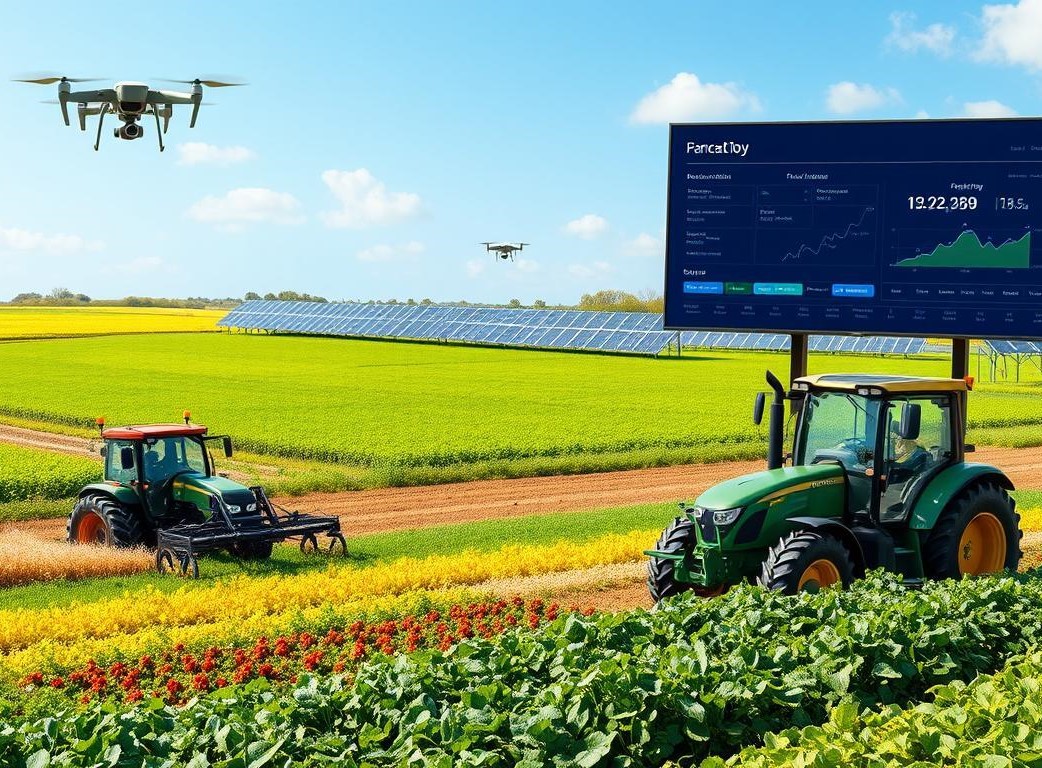



 Connect With Us
Connect With Us